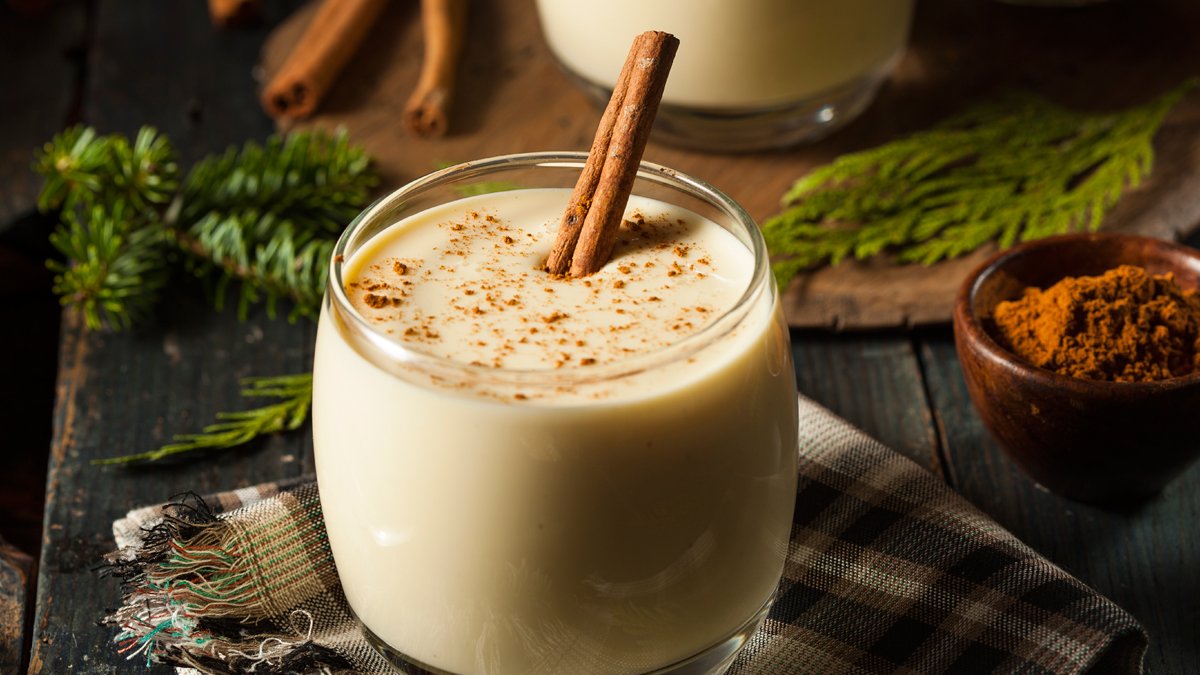The science behind eggnog
It’s that time of the year again and we all deserve to treat ourselves to some delightful Christmas specialities. Dr Veronica Giacintucci, Teaching Fellow in Food Science, explores the science behind the classic eggnog recipe.

You might associate eggnog with the classic American Christmas, but it originates from medieval Britain, and was adapted from posset, a drink made by curdling hot milk with wine or beer.

Cracking open the recipe
If you’re all about sweet treats at Christmas, then you’ll be familiar with eggnog, the egg-based alcoholic drink. Just like marmite, you’ll either love it or hate it, depending on how you feel about raw eggs.
So, let’s talk about the ingredients and find out more about how they work from a scientific perspective, using the BBC’s eggnog recipe as a guide.
Step 1
- Eggs are a powerhouse of proteins and lipids (fats) which are two important factors in producing emulsions and foams. When whisked, tiny pockets of air are introduced, and these are stabilised synergistically by the proteins and lipids. These pockets help produce a flavourful, viscous (thick) solution, forming a pleasant mouthfeel.
Top tip: You can swap out eggs for a blend of cashew, almond, oat milk and plant-based cream instead, but the overall product will be less viscous. - Caster sugar also helps to create air pockets to further stabilise the structure, so the product is thick, sweet and rich in the mouth.
Step 2
- Whole milk and double cream are both great sources of fats and further stabilise the eggnog structure, adding to the final mouthfeel and enhancing the perception of flavour.
- Rum, bourbon or a combination of both (whatever takes your fancy!) enhances the flavour of the eggnog and preserves the raw egg. Alcohol helps to ‘inactivate’ microorganisms and refrigerating the product slows mould growth. The Food Standard Agency has declared that British Lion eggs (recognisable by their red lion stamp) present very low risk in terms of Salmonella presence and danger of food poisoning (not something any of us wish to experience during the holiday season!) This is also supported by the Advisory Committee on the Microbiological Safety of Food (ACM).
- Nutmeg is added to give more flavour to the product.
Top tip: if you’re not a fan of nutmeg, swap this out for cinnamon.
Now you understand the science behind eggnog, grab your ingredients and whip up a mug of the festive fancy!
Find out more about our School of Biosciences and Medicine
References
- Advisory Committee on the Microbiological Safety of Food. Ad Hoc group on eggs. An update on the microbiological risk from shell eggs and their products. [online]. Available at: https://acmsf.food.gov.uk/sites/default/files/acm_1203a_eggreport.pdf [Accessed 16 Dec. 2020].
- Dias, E. (2011). A Brief History of Eggnog. [online] Time. Available at: https://time.com/3957265/history-of-eggnog [Accessed 16 Dec. 2020].
- Egginfo.co.uk. British Lion Eggs. [online]. Available at: https://www.egginfo.co.uk/british-lion-eggs [Accessed 16 Dec. 2020].
